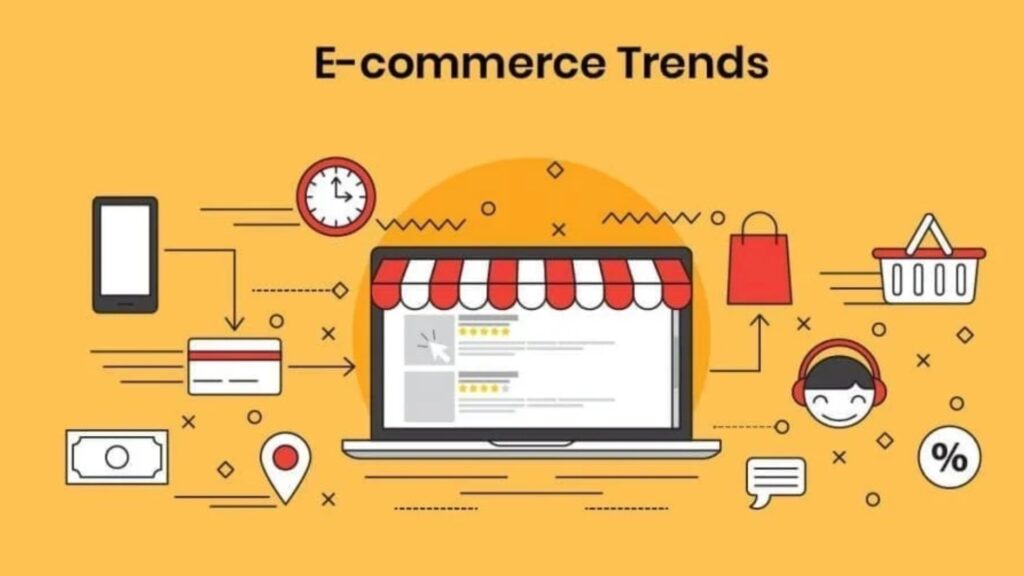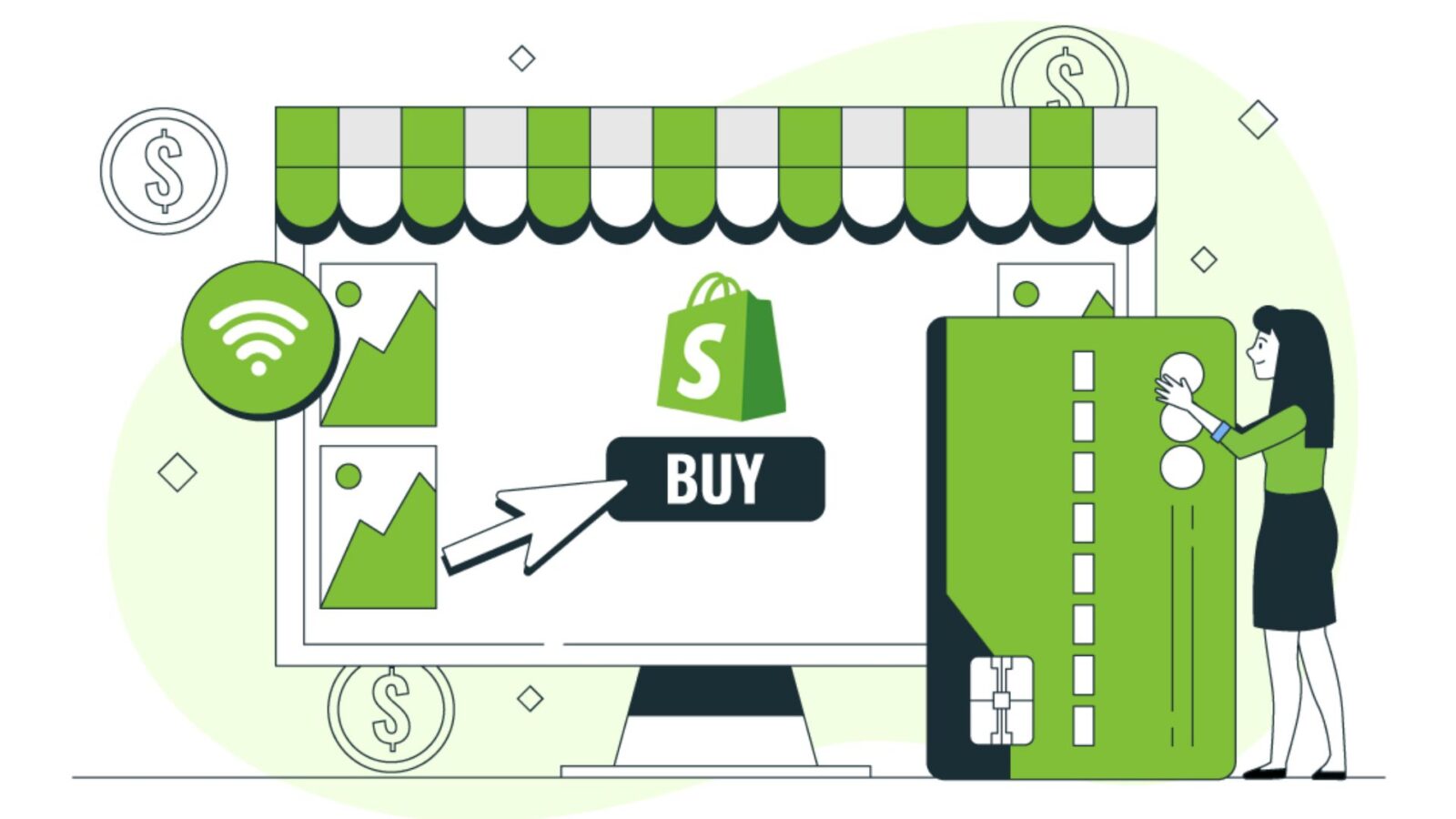The e-commerce landscape is evolving rapidly, and Shopify store owners must stay ahead of the curve to remain competitive. As consumer behavior shifts and technology advances, adapting to the latest trends can significantly impact sales and customer engagement. In 2025, several key developments will shape the future of online retail. Whether you’re an established Shopify seller or just starting, here are the top e-commerce trends you need to know.

1. AI-Powered Personalization for Shopify Stores
Artificial Intelligence (AI) is transforming the way Shopify merchants interact with customers. AI-driven personalization allows stores to tailor product recommendations, email marketing, and customer service to individual preferences, enhancing user experience and boosting conversions.
Key Features:
- AI-powered chatbots for real-time customer support
- Personalized product recommendations based on browsing history
- Automated email campaigns with personalized content
How to Implement:
- Use Shopify apps like ReConvert or LimeSpot for AI-driven upselling.
- Integrate AI chatbots like Tidio to handle customer queries.
- Leverage machine learning to create dynamic pricing strategies.
2. Voice Commerce is Taking Over
With the increasing popularity of voice assistants like Alexa, Siri, and Google Assistant, voice commerce is set to revolutionize online shopping. Customers are using voice search to find products, place orders, and track shipments, making it essential for Shopify stores to optimize for voice search.
Optimization Tips:
- Use long-tail keywords and natural language in product descriptions.
- Enable voice search capabilities on your Shopify store.
- Optimize for local search to capture nearby customers using voice queries.
3. Augmented Reality (AR) and Virtual Try-On
One of the biggest challenges in e-commerce is helping customers visualize products before purchase. Augmented Reality (AR) is solving this problem by offering interactive shopping experiences.
How Shopify Stores Benefit:
- AR features allow customers to try on clothes, accessories, or even furniture virtually.
- Reduces return rates by offering a realistic preview of products.
- Increases engagement and customer confidence.
Implementation:
- Shopify merchants can use AR-powered apps like Shopify AR and Threekit to enhance product visualization.
- Brands selling fashion, beauty, and home decor can benefit the most from this trend.
4. Subscription-Based E-commerce is Growing
Consumers prefer convenience, and subscription models offer a seamless shopping experience. From meal kits to beauty products, Shopify stores are adopting subscription-based models to generate recurring revenue.
Advantages of Subscription-Based E-commerce:
- Predictable revenue stream for Shopify store owners.
- Increases customer retention and brand loyalty.
- Helps businesses scale with minimal marketing costs.
How to Implement:
- Use Shopify apps like Recharge or Bold Subscriptions to set up recurring payments.
- Offer exclusive benefits to subscribers to encourage sign-ups.
- Focus on personalized packaging and customer engagement to maintain loyalty.
5. Social Commerce: Selling Directly Through Social Media
With platforms like Instagram, Facebook, and TikTok enabling direct shopping, social commerce is becoming a crucial sales channel. Shopify’s integrations with these platforms make it easier for store owners to sell products without customers leaving their favorite apps.
Social Commerce Strategies:
- Use Shopify’s Facebook and Instagram integration to tag products in posts.
- Leverage TikTok Shopping to reach younger audiences.
- Run influencer marketing campaigns to boost brand credibility.
6. Sustainable and Ethical Shopping is on the Rise
Consumers are becoming more environmentally conscious, favoring brands that prioritize sustainability. Shopify stores need to align with eco-friendly practices to appeal to this growing audience.
Sustainability Strategies:
- Offer eco-friendly products and sustainable packaging.
- Highlight ethical sourcing and fair trade certifications.
- Implement carbon-neutral shipping options using Shopify’s Planet app.
7. Mobile Commerce is Dominating Online Sales
Mobile commerce (m-commerce) continues to dominate e-commerce sales, with more consumers shopping via smartphones and tablets. Optimizing Shopify stores for mobile is no longer optional—it’s essential.
Mobile Optimization Tips:
- Ensure your Shopify theme is mobile-friendly and responsive.
- Implement one-click checkout options like Shopify Pay and Apple Pay.
- Optimize page speed for faster load times.
8. Livestream Shopping: The New Way to Sell Online
Livestream shopping is gaining traction as brands host live product demonstrations, Q&A sessions, and real-time sales events. Shopify stores can use livestreaming to engage customers and drive instant purchases.
How to Get Started:
- Use Shopify integrations like CommentSold or Livescale to enable live shopping.
- Host weekly product showcases on Instagram Live, Facebook Live, or TikTok.
- Offer exclusive discounts to viewers to increase engagement and sales.
9. Cryptocurrency Payments Are Becoming More Common
With the rise of digital currencies, Shopify is allowing merchants to accept cryptocurrency payments. This trend provides more payment flexibility and attracts a new segment of tech-savvy shoppers.
Benefits of Accepting Crypto on Shopify:
- Lower transaction fees compared to credit cards.
- Faster and more secure transactions.
- Access to a global audience that prefers digital payments.
How to Integrate Crypto Payments:
- Use Shopify-supported payment gateways like BitPay or Coinbase Commerce.
- Educate customers about the benefits of using cryptocurrency.
10. AI-Driven Inventory Management for Shopify Stores
Efficient inventory management is crucial for any Shopify store to avoid stockouts or overstocking. AI-powered inventory systems help store owners track demand trends, automate restocking, and reduce waste.
Key Benefits:
- Prevents lost sales due to stock shortages.
- Reduces holding costs and unnecessary storage.
- Improves order fulfillment speed.
Implementation Tips:
- Use Shopify apps like Stocky or TradeGecko for AI-driven inventory tracking.
- Leverage data analytics to forecast demand accurately.
Conclusion
As e-commerce continues to evolve, Shopify store owners must embrace these trends to stay ahead of the competition. From AI personalization and AR shopping to voice commerce and cryptocurrency payments, 2025 promises exciting advancements in online retail. By implementing these strategies, Shopify merchants can enhance customer experience, drive sales, and future-proof their businesses in the ever-changing digital landscape.
Stay ahead of the game by keeping your Shopify store updated with the latest technology and trends. Which trend are you most excited to implement in your store? Let us know in the comments!


















Leave a Reply